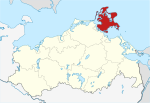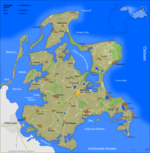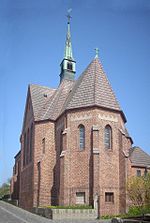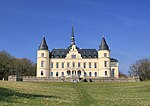Nonnensee

The Nonnensee is a lake in the borough of Bergen auf Rügen, Vorpommern-Rügen district, in the German state of Mecklenburg-Vorpommern. It is located northwest of the town of Bergen auf Rügen and is a very shallow lake. As a result, attempts were made as early as 1859/60 to drain the lake for agricultural land. Since about 1970 the lake was artificially drained and dried out. In 1993 the pumping station was shut and the lake re-established. Only a few tree stumps that jut out of the water, indicate that it was temporarily dry land. The lake is part of the protected area known as the North Rügen Bodden and Nonnensee (Nordrügensche Bodden und Nonnensee) and is a breeding place and sanctuary for many bird species as well as a recreation area for the nearby town. For example, a five kilometre long circular path runs around the lake with benches and two bird hides from which the rich variety of bird life can be observed. The lake lies at an elevation of 16.1 metres and has a surface area of 0.7 km².
Excerpt from the Wikipedia article Nonnensee (License: CC BY-SA 3.0, Authors, Images).Nonnensee
Schlumm, Bergen auf Rügen
Geographical coordinates (GPS) Address Nearby Places Show on map
Geographical coordinates (GPS)
| Latitude | Longitude |
|---|---|
| N 54.433888888889 ° | E 13.413888888889 ° |
Address
Graugänse am Nonnensee
Schlumm
18528 Bergen auf Rügen
Mecklenburg-Vorpommern, Germany
Open on Google Maps









